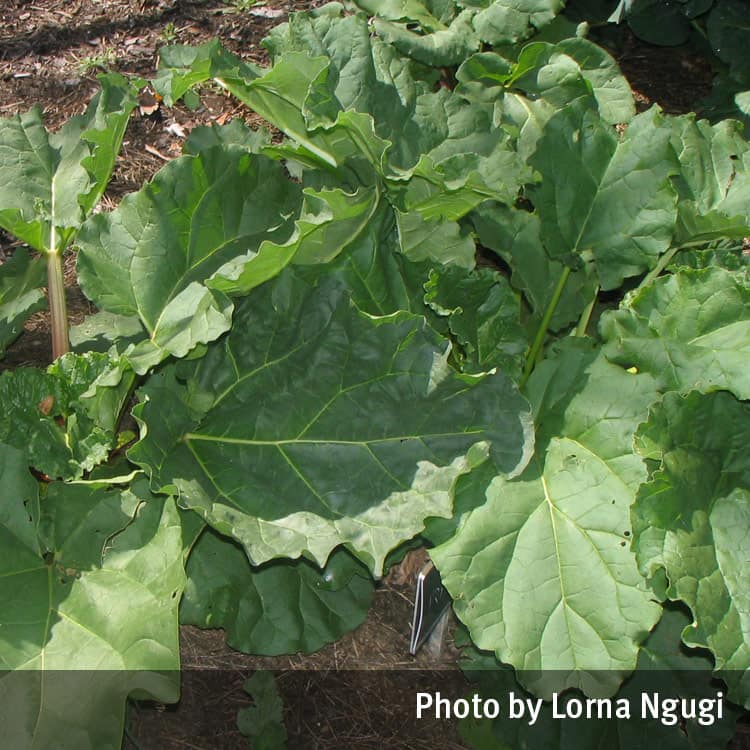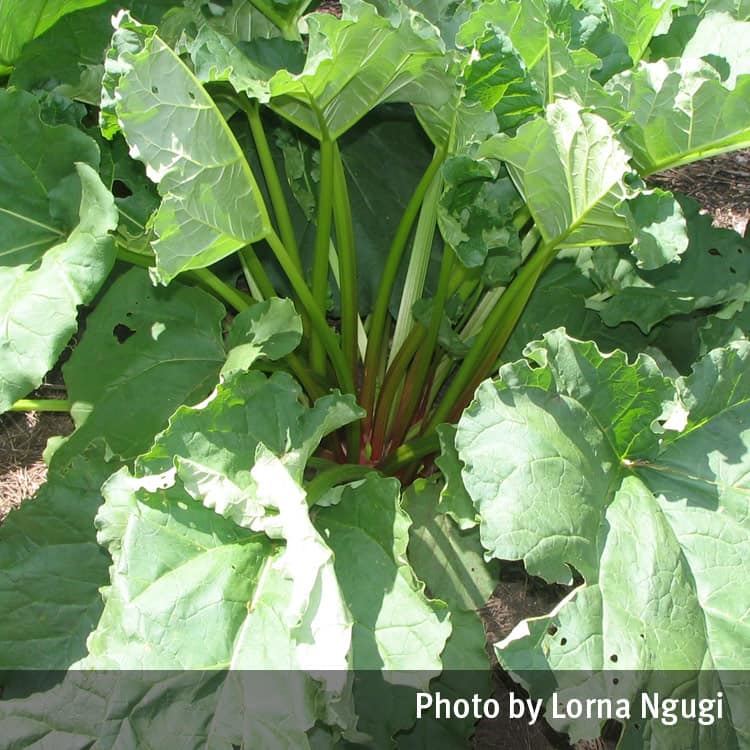Seek medical attention if symptoms occur.
Description
A large-leaved perennial herb to 1m and up to 1m across, often cultivated in home vegetable gardens.
The stems are edible once cooked, often sweetened to make them more palatable.
Small flowers are green to white clustered on erect stems. The large, dull green leaves are three-veined from the base with wavy, undulating margins.
Toxicity
Symptoms
Oxalates are in all parts of the plant but are especially concentrated in the leaves. If the leaves or uncooked stems are eaten, symptoms can include a burning sensation in the mouth, nausea, abdominal pain, vomiting, weakness and drowsiness. Blood clotting may be impaired. Contact dermatitis may occur.
Images


Details
Common name: Rhubarb
Botanical name: Rheum spp. most commonly Rheum rhabarbarum
Family: Polygonaceae
General description: A large-leaved perennial herb to 1m and up to 1m across, often cultivated in home vegetable gardens. The stems are edible once cooked, often sweetened to make them more palatable.
Flowers: Small flowers are green to white clustered on erect stems.
Leaves: The large, dull green leaves are three-veined from the base with wavy, undulating margins.
Fruit/Berries: The oval to heart-shaped fruit is a nut, 3-7mm in diameter.
Last updated: July 2023